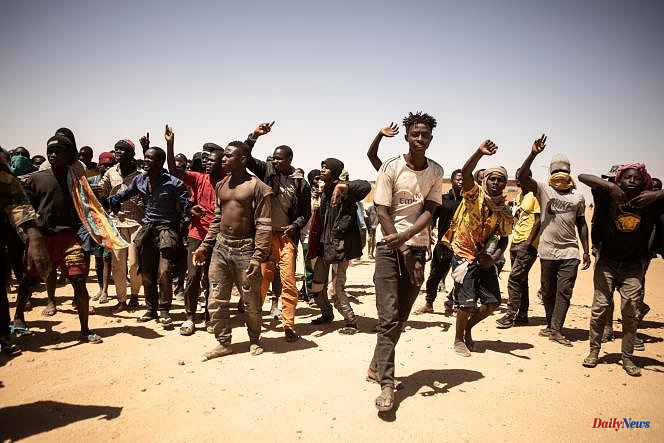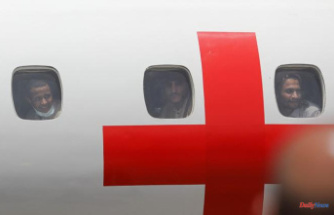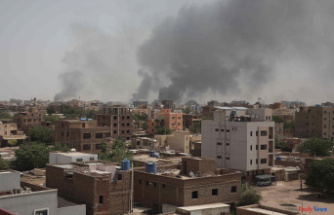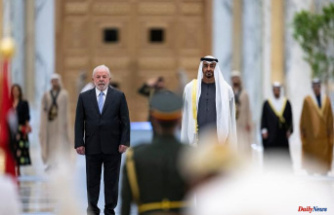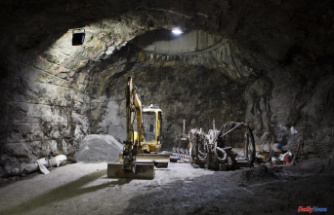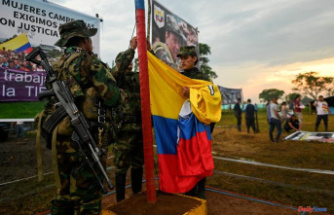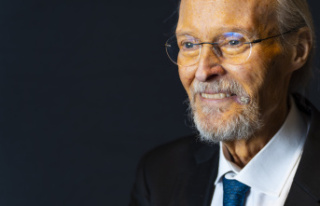At any moment they may appear on the straight horizon. Long lines of silhouettes walking in the desert, the strongest in front, the weakest behind. Every week, hundreds of migrants sent back from Algeria are stranded in Assamaka, the first village on the Niger border. They are now more than 4,500 wandering in this tiny island of land swept by the winds.
Malians, Guineans, Ivorians, Syrians, Bangladeshis... After walking 15 km in the desert, the expelled discover a new purgatory. The transit center managed by the International Organization for Migration (IOM), the main intergovernmental organization in this field, is overwhelmed by the influx and only takes care of around a third of those returned. "When we arrived here, we were told that we were not recognized as IOM migrants and therefore we only had to pay for our transport to return to the country", protests Abdoul Karim Bambara, an Ivorian.
In Assamaka, the water tanks are empty, the rations insufficient and the shelters too rare, while the temperature sometimes borders on 48°C during the day. Thousands of people piled up against the walls or under makeshift tarpaulins to find a corner of shade. Stripped of all their belongings in Algeria, according to their testimonies, the repressed can neither call their relatives nor pay for the return trip. They are then condemned to survive in this prison of sand for an indefinite period, often several months.
Fly-infested rice
Some are doctors, students, traders. But around the barbed wire walls of the center, there are no more individuals. Just a crowd rumbling and jostling to scream their desperation, their scabies-infested skins, their infected wounds, their empty bellies and their ingrained traumas. And the end of all humanity. "We have become cattle!" fulminates Herman, an Ivorian migrant. " Did you see that ! interrupts a man, holding up a handful of sticky rice infested with flies: "Can you eat that?" We get sick from it! Away, two groups of starving people throw stones at each other in a cloud of dust. The fights are incessant.
A few days earlier, the death of a Cameroonian migrant sparked a riot, dispersed by tear gas. The IOM transit center was attacked and looted by protesters. “We are all traumatized. People can't control themselves, it's not right in their heads, nothing's right here! People are dying! enrages Aboubacar Chérif Cissé, originally from Sierra Leone. "If there was enough to eat, people wouldn't fight, but there's no food, so what can they do?" If they have nothing, they will fight, just to survive,” said Mohamed Mambu, Sierra Leonean delegate at the Arlit transit center.
The 1,500 inhabitants of Assamaka are overwhelmed by this uncontrollable neighborhood. “They are there everywhere in the village, towards the health center, under the walls,” worries François Ibrahim, representative of the local NGO Alarme phone Sahara, which provides first aid to migrants in the desert. Migrants "steal the animals of the population to slaughter them", he laments: "It is not because they are thieves, but when the belly is hungry..."
"The EU has its share of responsibility"
The number of migrants rejected at the gates of Niger has continued to increase since the beginning of the year. An "unprecedented" situation, according to Doctors Without Borders (MSF). From the Algerian border to Agadez, the regional capital located 350 km away, the transit centers are all congested. Routes that lead further south are under threat from jihadist groups, forcing expensive charter flights to repatriate migrants to their countries of origin. “Flights are often cancelled. But every week, there are deportations,” explains Ousmane Atair, manager of the Arlit transit center for IOM.
Located in northern Niger, the Agadez region is paying the price for relative stability. "The Assamaka-Arlit axis is the most secure, that's why all migratory flows are oriented on this side", underlines the mayor of Arlit, Abdourahamane Maouli. However, international aid is mobilized elsewhere by other security and humanitarian crises. The main funder of IOM in the region is the European Union (EU), which finances the bulk of the flights bringing migrants back to their countries of origin.
For Alarme phone Sahara, "IOM plays a key role in the policy of externalization of borders on African soil by EU states", anxious to ward off migratory pressure. Since the outbreak of the Libyan crisis in 2011, “Agadez is the last door and we had to secure the journey of all these asylum seekers; but in reality, it was a breath of fresh air to discourage them," said Tari Dogo, Secretary General of the Agadez Regional Council, summing up a feeling widely shared in the region: "The EU has its share of responsibility in this situation. »

